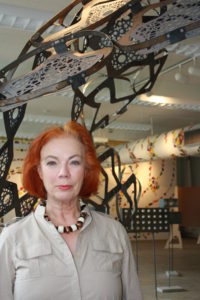 I offer a broad range of consulting services including but not limited to:
I offer a broad range of consulting services including but not limited to:
- speaking engagements
- critiques and evaluations
- mission conceptualization
- audience development
- curatorial consultation
- public engagement
- institutional evaluation
My areas of expertise in visualization/imaging, image-based topics and themes lends itself to a large number of situations for a wide spectrum of institutions.
Case Studies:
Helped to develop and realize collaborative programs conjoining the Arts, Humanities, Social Sciences and the Neurosciences, Cognitive Science, the New Philosophy of the Brain-Mind by identifying shared problems that cannot be resolved from the perspective of one discipline alone. For example: insight, inferencing, the varieties of attention, decision-making, imitation/mirroring.
Facilitated institutional change by creating a new meta-field and/or reconceptualizing existing programs to train the graduate students of the future. See my book, Echo Objects, 2007, which fired the first salvo, and the collaborative follow-up volume: A Field Guide to a New Meta-Field: Bridging the Humanities-Neuroscience Divide, forthcoming 2009. The latter is a concrete demonstration--a prototype-- written by scholars from Clinical Psychology, Art and Literary History, Theology, Urban Studies, etc. meant to demonstrate how others could address analogous problems by incorporating a high-level, Janus-faced Liberal Arts/ Brain Sciences perspective. In that sense, the book is a both a primer offering succinct, thoughtful case studies that can be mobilized by others as well as a summons to create a new conjunctive field of study. [expander_maker more="See more" less="See less"] Advised on the changing role of Special Collections and Rare Books: especially Illustrated Natural Histories, Travel Accounts and Atlases, Ars Medica of all kinds, Anatomies--including etchings up to the National Library of Medicine's Digital Human Project--in short, embracing all formats, whether small or elephant-folio volumes. How might these tomes from the past be made to appeal to diverse users from experienced bibliophiles to curious students? How might the Imaged Book be made to live again, holding their own in contemporary venues and creatively mixing with On-Line Media? In brief, how can they move beyond the Library walls that customarily house them?
Advised and served as invited curator for special exhibitions, most recently for one on Cabinets of Curiosities being considered by the Field Museum, Chicago, for 2011.
Invited to join in conversations with Art and Science Museums who are engaged in rethinking their mission and audience, effective installations, and durable impact in our age of competitive immersive environments. Recent public and private conversations include those with the Adler Planetarium and the Indianapolis Museum of Art.
Performed critiques in Schools of Art. Helped to evaluate Art, Architecture, Art History, Visual Studies, Film and Media Studies Programs in colleges and universities.
Evaluated visualization, imaging, and visual studies programs across the Humanities, Social Sciences, and Sciences. For example, the Nano Center at the University of South Carolina, the Art/Science Visualization Initiative at the University of Illinois, Urbana.
Helped conceptualize and instantiate the ways in which New Media and High-Speed Computation are changing everything--not just at the delivery level but in terms of content, i.e., the important distinction to be made between Information and Comprehension; the value of Slow Looking, Slow Learning, Slow Art, etc.